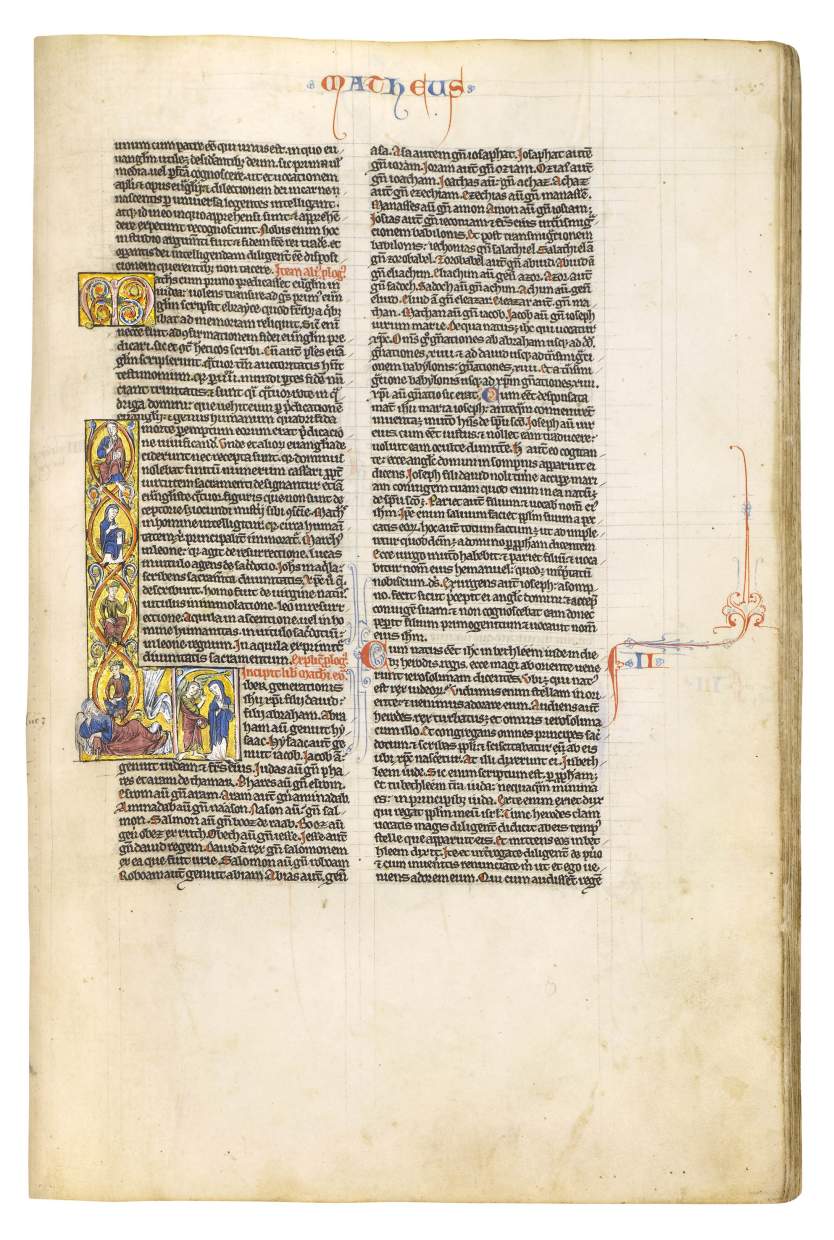Artworks


Biblia Latina
Manuscript on vellum, illuminated by the workshop of the Bible Moralisée
France, Paris, c. 1220-30
292 x 197 mm, 385 leaves, 81 historiated initials
fol. 3: Creation and Fall of Man
Hide caption

Biblia Latina
Manuscript on vellum, illuminated by the workshop of the Bible Moralisée
France, Paris, c. 1220-30
292 x 197 mm, 385 leaves, 81 historiated initials
fol. 3 Genesis
Hide caption

Biblia Latina
Manuscript on vellum, illuminated by the workshop of the Bible Moralisée
France, Paris, c. 1220-30
292 x 197 mm, 385 leaves, 81 historiated initials
fol. 77v: The Book of Ruth
Hide caption


Biblia Latina
Manuscript on vellum, illuminated by the workshop of the Bible Moralisée
France, Paris, c. 1220-30
292 x 197 mm, 385 leaves, 81 historiated initials
Binding
Hide caption

Biblia Latina
Manuscript on vellum, illuminated by the workshop of the Bible Moralisée
France, Paris, c. 1220-30
292 x 197 mm, 385 leaves, 81 historiated initials
fol. 290: Second Vision of Zachariah
Hide caption

Biblia Latina
Manuscript on vellum, illuminated by the workshop of the Bible Moralisée
France, Paris, c. 1220-30
292 x 197 mm, 385 leaves, 81 historiated initials
fol. 284v: Jonah Climbing out of the Whale's Mouth
Hide caption
In the early or mid 13th century, the contents of Bibles varied considerably in different respects, including the choice and order of the biblical books etc. The rapid growth of the University of Paris as well as the new activities of Dominican and Franciscan preachers, however, necessitated a standardised text of the Bible. Before it took its final shape by about 1230, a number of these Bibles that had been copied since c. 1200 – including the present manuscript – prefigured that new version in an experimental phase. In cooperation with the theology masters at the schools in Paris, professional workshops provided the means for regulating and standardising the Bible texts into a one volume version that later came to be known as the 'Paris Bible'.
With its exceptional and extensive illustration cycle this manuscript represents a state of transition in the development of text and design, as well as in illumination and size. Each separate Bible book is opened by a superb historiated initial while the prologues usually begin with one or more ornamental initial, and some even with a historiated initial as well. The illustration is of minute elaborateness and can be compared with that in the famous Bible Moralisée (Vienna, ÖNB, Ms. 2554). Several artists were involved in its decoration but their hands are hardly distinguishable. Researchers think that a number of excellent Paris illuminators must have been assembled especially to execute that royal commission under the aegis of one main artist, named the Master of Vienna 2554.
In conjunction with the evidence of the layout and structure of the text itself, stylistic parallels help contextualise the illumination. Figures are elongated and elegant in outline, their gestures eloquent, although faces in general remain somewhat static. Most characteristic is the design of garments, folds and drapery. Cloaks and tunics have vivid and irregular hemlines, blue and red dominate the palette, while an unusual yellowish green is used for the clothes of minor characters. Typical for our painter(s) are: wide open eyes with pupils carefully picked out as black dots in all figures, relatively straight eyebrows, noses terminating in flourishes, quite uniform facial profiles, with low foreheads while ears almost always are hidden under curly grey or light brown hair accentuated with black lines. The small lips with red dots and red cheeks, however, are not specific but characterise all the workshops that were involved in illuminating the Parisian Bibles moralisées.
The lush decoration of this codex presupposes an important donor or a prestigious destination. Jörn Günther currently has available a superb series of Bibles and Psalter Books of the first half of the 13th century that together could form the fundament of an extraordinary interesting collection.
Read more about this manuscript in our Spotlight.



